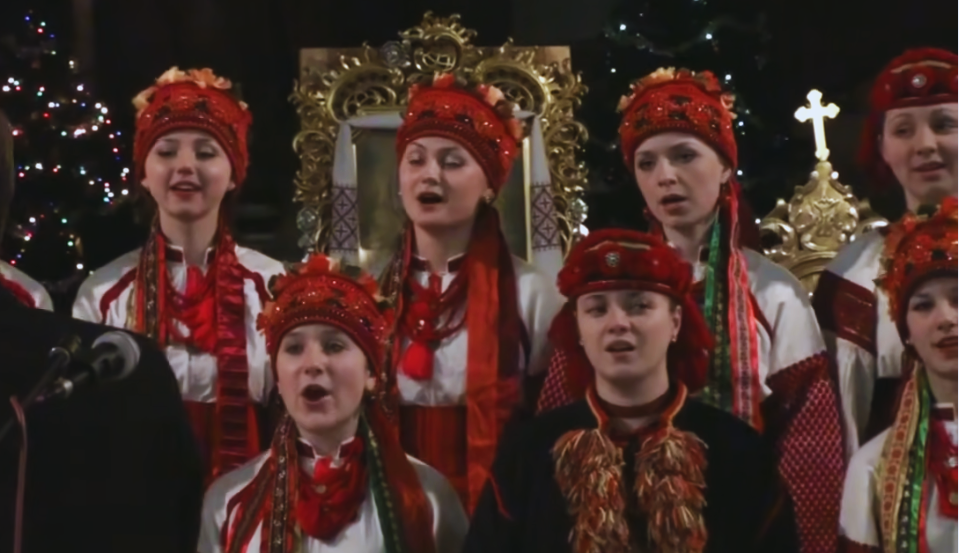How This Ukrainian Song Became a Christmas Carol You Know and Love
This song with roots in Ukraine has become a classic song for Advent and Christmas in the United States.

The well-known Christmas carol, “Carol of the Bells,” has quite a remarkable history. It’s difficult to believe that a Christmas carol with such a joyous tone originated more than a century ago in Ukraine during a time of turmoil so reminiscent of today.
This year, “Carol of the Bells” is celebrating the 100th anniversary of its premiere in the United States. When it debuted, it was not a Christmas carol yet — that would come a few years later. Its first performance came on Oct. 5, 1922, at New York’s Carnegie Hall to a sold-out house — the same venue where it will again be featured in a concert Dec. 4 to mark its momentous centennial.
At that 1922 debut it had its original Ukrainian title — “Shchedryk” — meaning “generous evening.” It was really a festive New Year’s song taken from Ukrainian folk tradition. But the musical foundation was there for its transformation into the popular Christmas carol in 1936.
The song was composed in 1914 by one of Ukraine’s major composers, Mykola Leontovych. He based the melody on traditional folk songs. It was originally commissioned for the Ukrainian Republic Choir by its choir director for a Christmas concert. It was an immediate hit in Ukraine.
To familiarize the world with the Ukrainians’ plight through international appearances, the same choir director who commissioned “Shchedryk” formed the new Ukrainian National Chorus to tour Europe, the United States and several other countries. In the United States alone the choir appeared in 115 cities across more than 35 states. The chorus also made the first recording of “Shchedryk.” No matter where the choir sang, “Shchedryk” was an outstanding hit. Concertgoers everywhere called for it to be sung for an encore.
With lyrics inspired by an ancient Ukrainian folk traditions, the song is about a swallow flying into the house to tell the family about the bountiful year coming up for them. For those politically uncertain and harsh times, that message was uplifting in Ukraine. But the meaning did not matter for audiences around the world, who did not know what the Ukrainian lyrics meant, but were completely enthralled by the music and singing.
Then came 1936 and the birth of “Carol of the Bells.” In New York, well-known choral director Peter Wilhousky, who was born in New Jersey of Ukrainian ancestry, did the choral arrangements for the popular radio broadcasts of Arturo Toscanini’s NBC Symphony Orchestra. Needing another piece to fill out a program, Wilhousky turned to a piece of music familiar to him. Naturally, it was Leontovych’s “Shchedryk.” But he knew the choir couldn’t sing it in Ukrainian.
He had an idea. Since the melody reminded him of bells ringing, Wilhousky sat down and wrote lyrics about bells and Christmas for the song. The carol begins, “Hark! how the bells …” Naturally, it also includes “Christmas is here … Merry, merry, merry, merry Christmas.” It was an instant hit with the public once they heard it on the national airwaves.
Requests for the sheet music came pouring in. Wilhousky had it published for distribution. Soon it was being performed on radio and being recorded by choirs like the Robert Shaw Chorale and the Tabernacle Choir. In 1951 even radio’s Phil Spitalny and his All-Girl Orchestra and Choir recorded it. (Likely he was already familiar with the melody because he had emigrated from a town in the Kyiv Region in Ukraine.)
Uplifting Message
Then and now, this carol has contained a message of joy and hope, even in the sad circumstances of its composition in Ukraine. By definition, a carol is “a popular song or ballad of religious joy.” And as a verb, another definition is “to go about outdoors in a group singing Christmas carols.” The lyrics describe the bells playing “with joyful ring … all caroling,” and says, “joyf’’ly they ring … while people sing songs of good cheer … Christmas is here.”
For its 100th anniversary celebration in the United States, “Carol of the Bells” will return to Carnegie Hall, where it was heard for the first time in this country. Naturally, a Ukrainian choir will be performing it and other works. Surely it will bring the house down.
But more importantly, whenever you hear “Carol of the Bells” this year, say a prayer for Ukraine that hope will abound and that peace and joy will return to that country — and to the world — with the celebration of the birth of the King of Peace.

